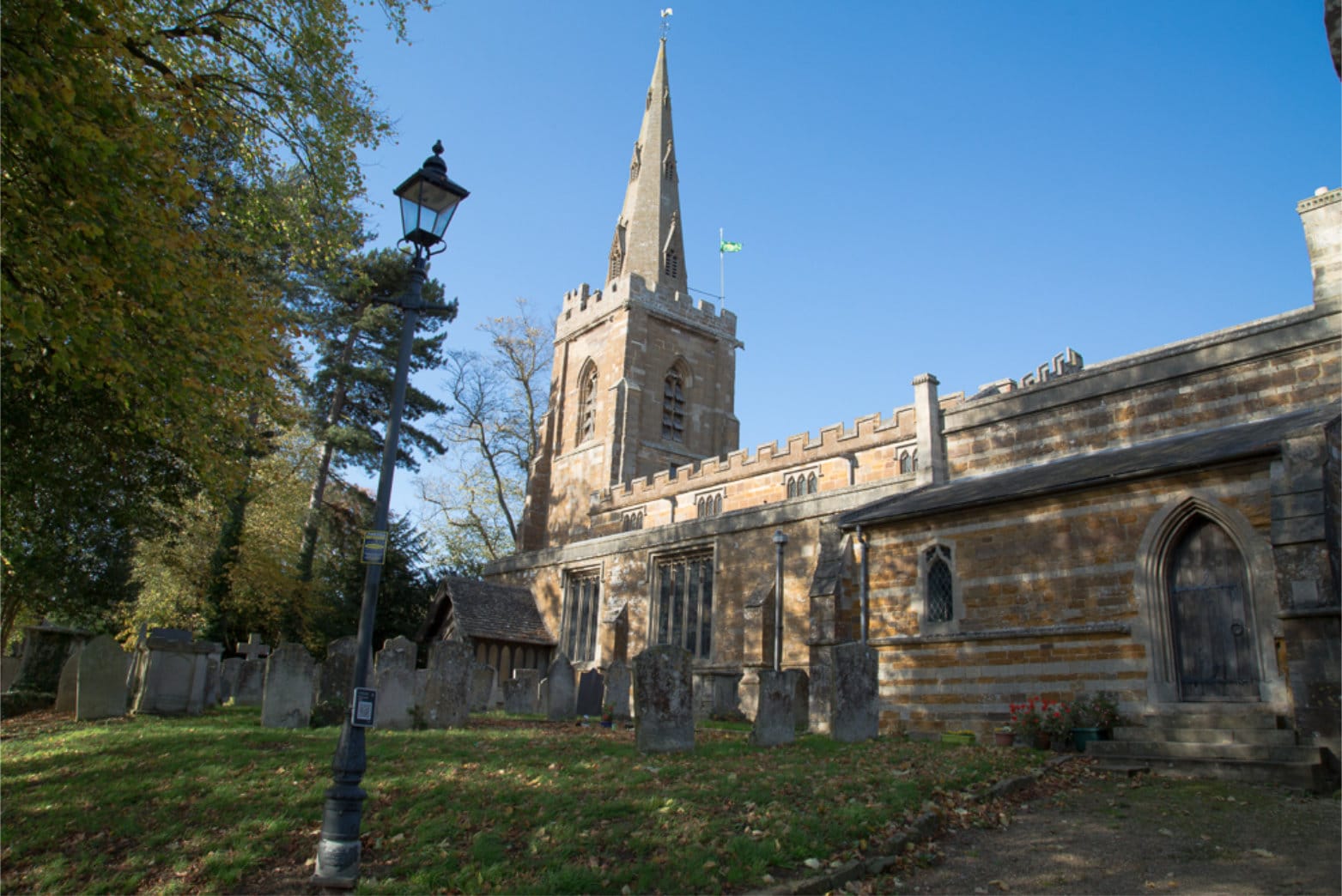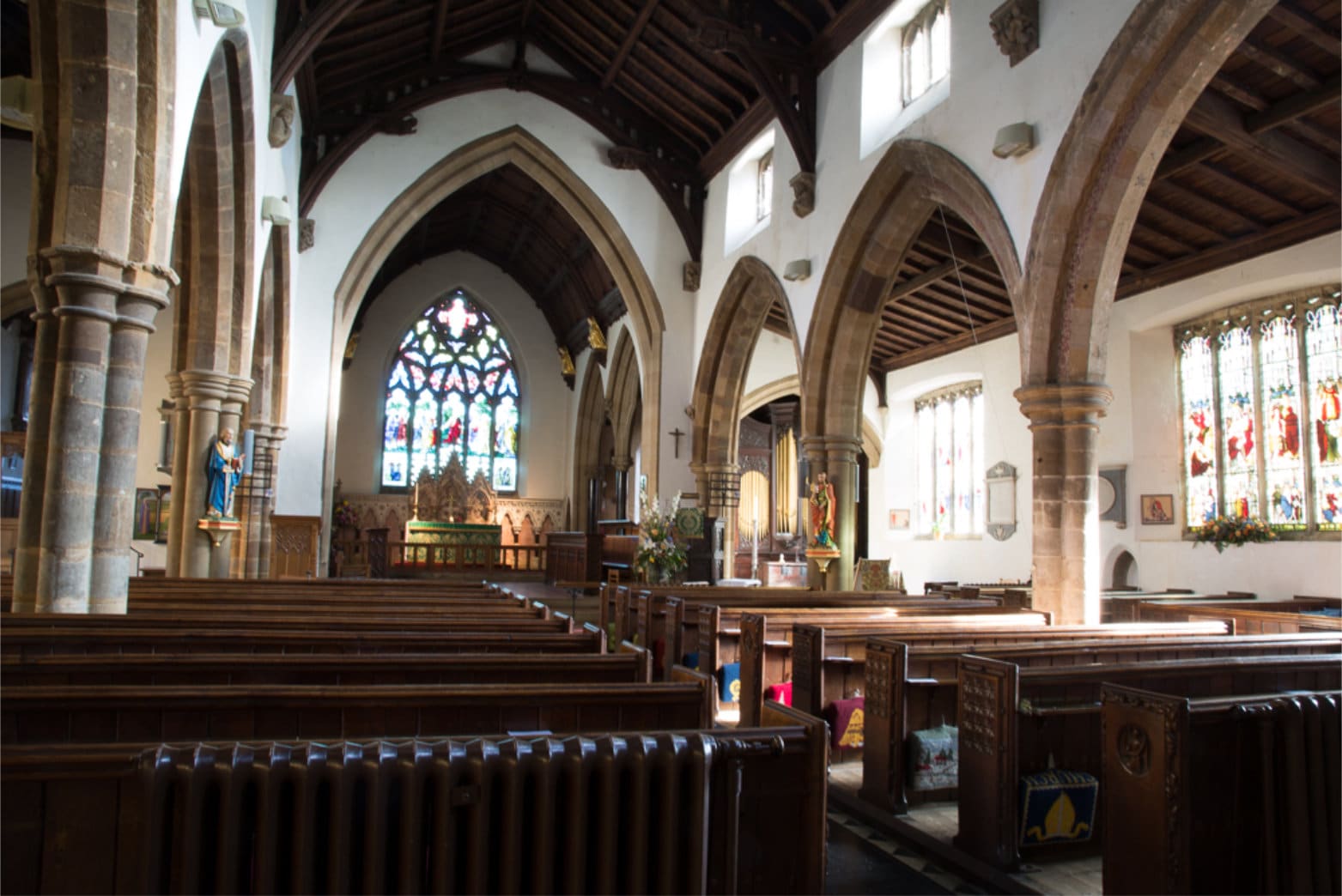
The Parish Church of St Peter and St Paul
The Church of Saints Peter and Paul lies to the south side of the market place and forms an integral part of the town’s main square. The church is usually open to the public and visitors are welcome. Two modern statues of St Peter and St Paul stand either side of the nave.
Though not mentioned in the Doomsday Book, in Saxon times the Church was one of three attached to the royal manor of Ridlington. Edward the Confessor gave the monks of Westminster Abbey the right appoint the Rector. In return Uppingham paid the Abbey a pension of 40 shillings a year. Perhaps we owe the Abbey our first stone building and not to the Saxons. All that remains of the Norman (some say the Saxon) church are four sculptured fragments of heads of saints; two either side of the north door and two more in the Lady Chapel found in 1861.
The church was rebuilt and enlarged early in the 14th century. The south and west walls, the west three pairs of columns and arches, the chancel arch and many windows date from this time, though two piscina and the bowl of the front are earlier. The early 1300s were prosperous times for Uppingham until the Black Death ravaged the town in 1348-9 AD. In spite of this catastrophe the tower was built in the late 14th century.
Expense and neglect followed. In 1540 Leland writes of ‘a very mean church’. A century later the church had many windows boarded up, its paving and roof out of repair. From 1632, six years of repairs cost £600 levied on the town’s inhabitants, many of whom refused to pay. They petitioned the Archbishop of Canterbury against ‘insupportable taxes’, seemingly with little success. But in 1654 Evelyn writes of a ‘pretty and well-built-town’ in stone.

In 1859 William Wales became Rector. He found the church in a sorry condition. The London architect Henry Parsons was commissioned and in 1860-1 the church was rebuilt and restored in the Victorian style for £6,717 including a new churchyard. This third restoration and enlargement involved demolishing the chancel and rebuilding the east end of the church, extending the nave a bay eastward, widening the north aisle, new north and south porches and roof. The chancel arch was moved 15ft to the east and the wall of the north aisle rebuilt. The east windows from both aisles were re-used at the new east end and a new and larger east window inserted in the chancel above the new high altar and reredos.
In the following century chancel improvements, a new Lady Chapel, tower screen and ringing chamber were introduced following the 1932 proposals by the London architect Leslie Temple Moore.
Between 2001 and 2009 much needed structural work was undertaken to make safe the tower, steeple and parapet, a new south aisle roof and major alterations and refurbishment of the interior to meet the needs of modern worship, new lighting and an audio system, new vestments and hangings, at a cost of £0.4m raised by the Parish. In 2006 the 1860 Holdich organ was replaced by an1894 Harrison & Harrison instrument from the redundant church of All Saints Eppleton, County Durham at a cost of £70,000.
The Church has a ring of eight bells looked after by the Uppingham Bellringers who raise money every year towards their upkeep.





